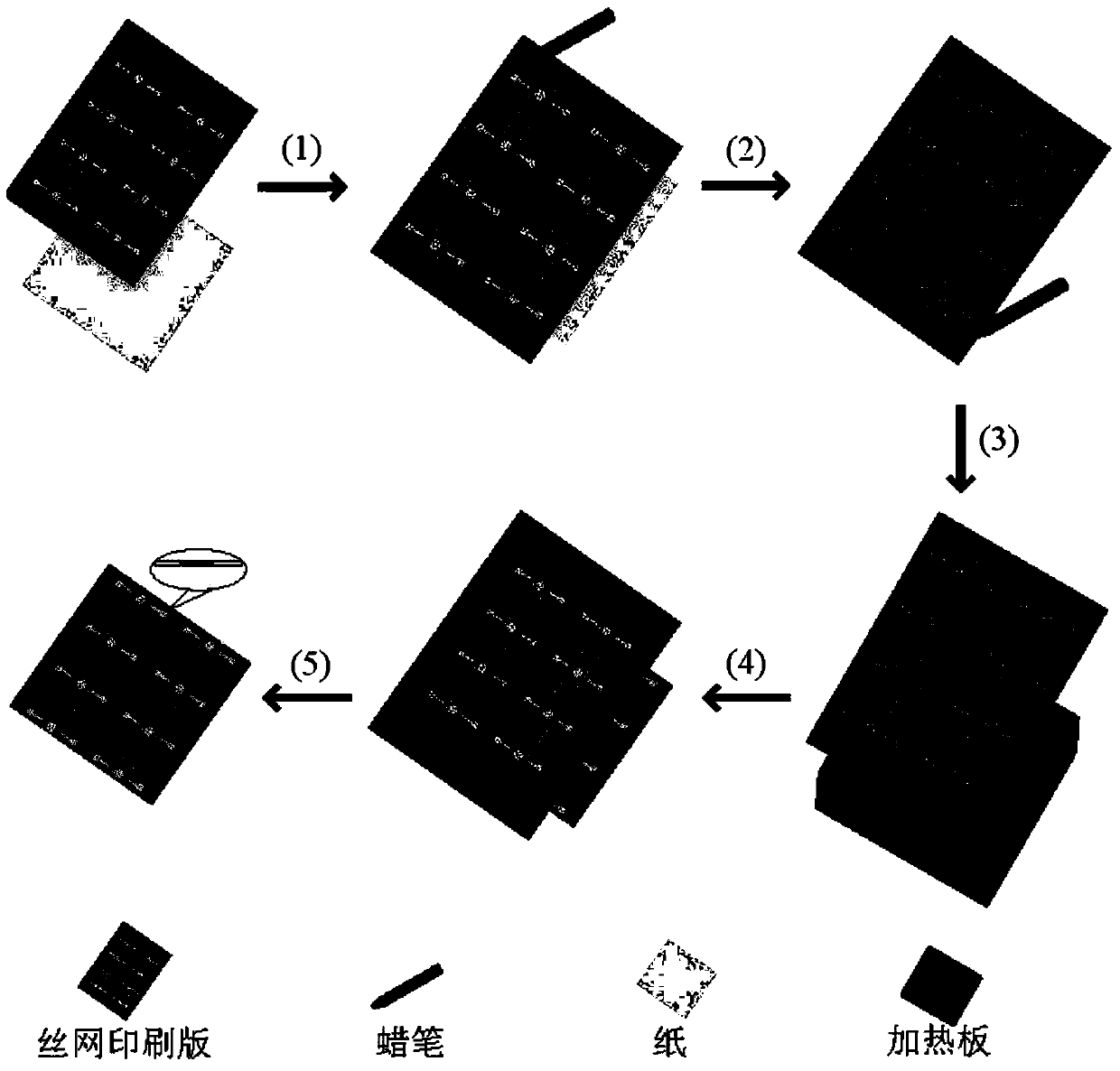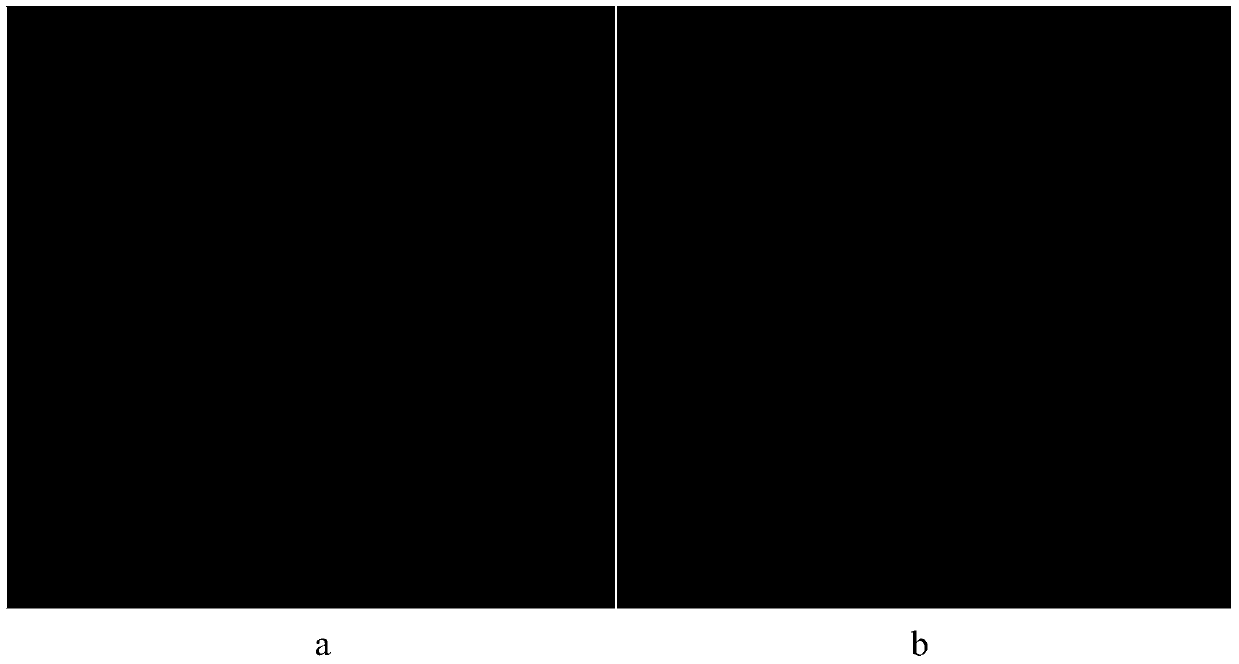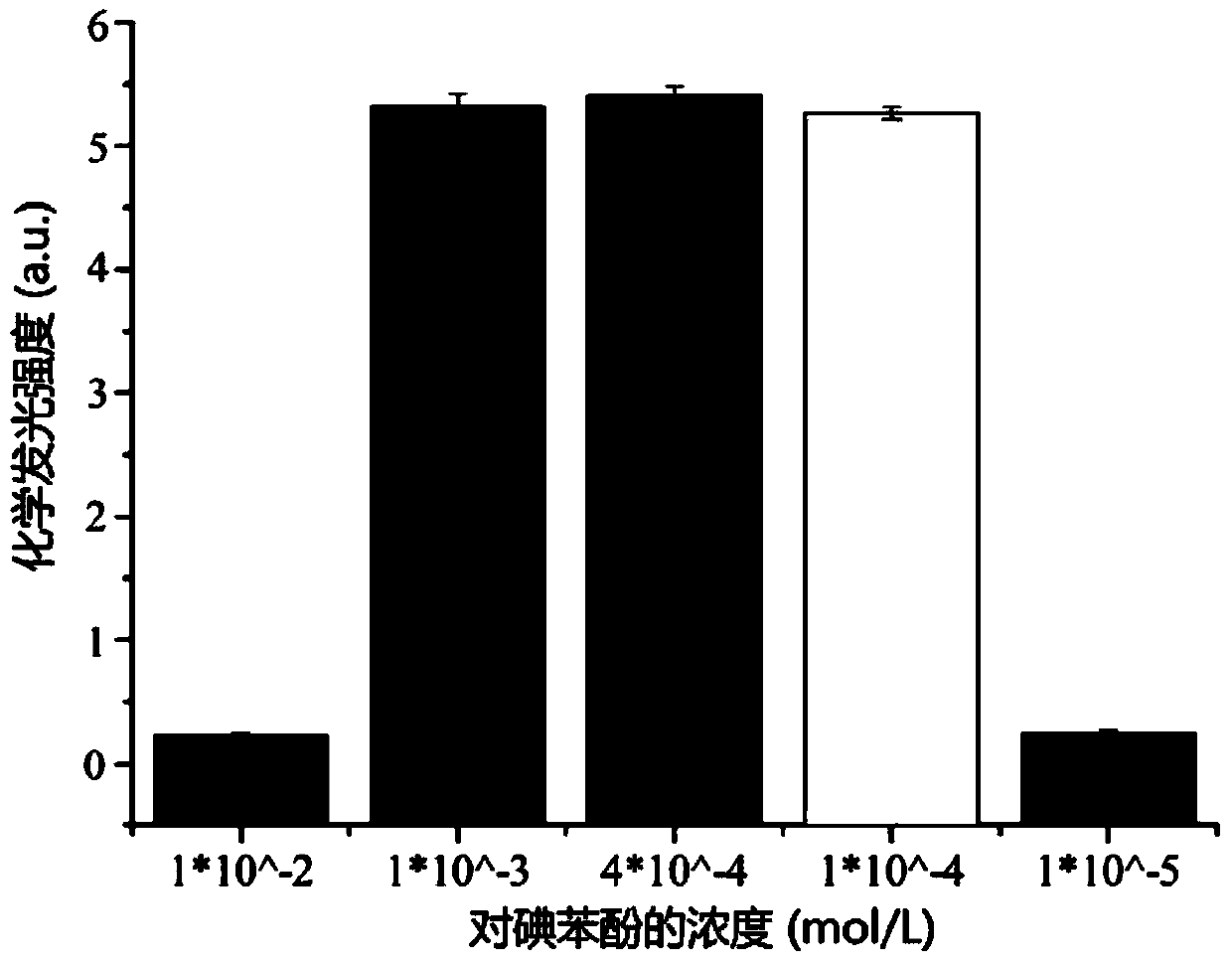Paper-based micro-fluidic chip enhancement type chemiluminescence gene sensing method
A microfluidic chip, chemiluminescence technology, applied in biochemical equipment and methods, microbial determination/inspection, etc., can solve problems such as unclean washing, cross-contamination of reagents, narrow application range, etc., to enhance detection sensitivity, The hydrophilic reaction area is fine and the screen printing effect is good.
- Summary
- Abstract
- Description
- Claims
- Application Information
AI Technical Summary
Problems solved by technology
Method used
Image
Examples
Embodiment 1
[0056] A method for paper-based microfluidic chip-enhanced chemiluminescence detection of hlyA gene, comprising the following steps:
[0057] (1) Fabrication of paper-based microfluidic chips
[0058] like figure 1 As shown, press a 200-mesh nylon screen printing plate (diameter 4mm, wash channel length 4mm, width 2mm) on 200mm×200mm Whatman No. 1 chromatography paper (the two are close to each other), and then apply wax on the screen printing plate, wax Infiltrate the chromatography paper through the screen printing plate; then, place the screen printing plate with the chromatography paper on the heating plate for heating (heating at 100°C for 5s), with the side with the chromatography paper facing the heating plate; after heating, the chromatography paper The paper falls off naturally from the screen printing plate, and is cooled to dry at room temperature. The prepared paper-based microfluidic chip will have reaction pools one by one on it.
[0059] (2) Design capture pr...
Embodiment 2
[0068] A paper-based microfluidic chip enhanced chemiluminescence detection method for hlyA gene, the steps and materials are the same as in Example 1. Several experimental groups were set up, and the concentrations of p-iodophenol in the bottom solution were 1×10 -2 mol / L, 1×10 -3 mol / L, 4×10 -4 mol / L, 1×10 -4 mol / L, 1×10 -5 mol / L.
[0069] The chemiluminescence intensity values of each experimental group are as follows: image 3 shown.
[0070] It can be seen that there is a threshold value for the enhancing effect of p-iodophenol. When the concentration of p-iodophenol is low, there is almost no enhancement effect on luminescence, and when it is higher than a threshold (1×10 -4 mol / L), the enhanced luminescence begins; in a certain concentration range (1×10 -4 mol / L~1×10 -3 mol / L), the luminescence tends to be stable, continue to increase the concentration to a larger threshold (1×10 -3 mol / L), the luminescence was significantly weakened. The possible reason fo...
Embodiment 3
[0073] A paper-based microfluidic chip enhanced chemiluminescence detection method for hlyA gene, the steps and materials are the same as in Example 1.
[0074] Since the optimal pH value of horseradish peroxidase catalysis is neutral or weakly acidic, and the quantum yield of luminol chemiluminescence is the highest when the pH value is about 10.0, it is necessary to choose a pH value that can balance the relationship between the two. pH.
[0075] Several experimental groups were set up, and the pH values of the bottom liquid were 7.0, 7.5, 8.0, 8.2, 8.5, 9.0, and 10.0, respectively.
[0076] The chemiluminescence intensity values of each experimental group are as follows: Figure 4 shown.
[0077] It can be seen that the acceptable pH value is from 7.5 to 9.0, and those less than 7.0 and greater than 10.0 basically do not emit light. The chemiluminescence intensity was the largest and relatively stable when the pH value of the bottom solution was 8.2.
PUM
 Login to View More
Login to View More Abstract
Description
Claims
Application Information
 Login to View More
Login to View More - R&D
- Intellectual Property
- Life Sciences
- Materials
- Tech Scout
- Unparalleled Data Quality
- Higher Quality Content
- 60% Fewer Hallucinations
Browse by: Latest US Patents, China's latest patents, Technical Efficacy Thesaurus, Application Domain, Technology Topic, Popular Technical Reports.
© 2025 PatSnap. All rights reserved.Legal|Privacy policy|Modern Slavery Act Transparency Statement|Sitemap|About US| Contact US: help@patsnap.com



